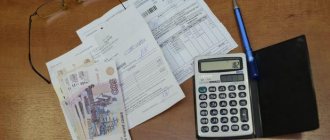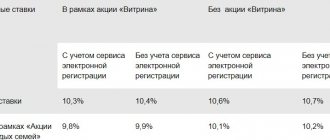Organizational property tax is one of the mandatory OSNO taxes for legal entities (including foreign ones). Individual entrepreneurs, in turn, pay property tax like individuals (more details here).
Note:
Organizational property tax is a regional tax introduced by the laws of the constituent entities of the Russian Federation. Regional authorities can independently set the tax rate (within the limits established by the Tax Code of the Russian Federation), the procedure and terms of payment, benefits, and features of calculating the tax base.
Who is exempt from paying corporate property tax
The list of organizations exempt from the obligation to pay this tax is listed in paragraphs 1.1 and 1.2 of Art. 373 Tax Code of the Russian Federation.
Object of corporate property tax
For Russian organizations, the object of taxation is movable and immovable property, recorded on the organization’s balance sheet as an object of fixed assets (account 01).
Property exempt from taxation
The following are not subject to property tax:
- Land plots, water bodies and other environmental management facilities.
- Objects of cultural heritage (historical and cultural monuments).
- Nuclear installations, storage facilities for nuclear materials, disposal of radioactive waste.
- Space objects.
- Vessels registered in the international ship registry.
- Other objects specified in clause 4 of Art.
374 Tax Code of the Russian Federation .
note
that from January 1, 2020, the benefit providing for exemption from taxation of fixed assets included in the first or second depreciation group (clause 8, clause 4, article 374 of the Tax Code of the Russian Federation) ceases to apply. The decision to extend the period of the benefit or set the tax rate has been transferred to the power of the regions, which, in the event of refusal to extend the benefit, will be able to set the rate for this tax in the amount of no more than 1.1% (at the moment the tax rate on property of organizations cannot be more than 2.2%)
Property tax rate in 2020 for individuals
The obligation to pay property tax also applies to individuals – citizens of the Russian Federation. Starting from 2020, for this category of payers it is calculated according to new rules.
For individuals, the 2020 property tax rate is applied based on the cadastral or inventory value of the property.
About rates for cadastral valuation
In most regions of the Russian Federation, property tax for individuals is calculated based on its cadastral value, determined at the beginning of the tax period. Where there is a law on the use of cadastral valuation as a tax base, the marginal rates are (clause 2 of Article 406 of the Tax Code of the Russian Federation):
| Bid | Objects |
| 0.1% (the rate can decrease, down to zero, or increase, but not more than 3 times) | Residential buildings (including unfinished ones), apartments, rooms, unfinished objects, real estate complexes with a residential building, garages, parking spaces, outbuildings up to 50 sq. m. m in summer cottages |
| 2% | Administrative and shopping centers costing from 300 million rubles. |
| 0,5% | Other objects |
If the rates are not determined by regional law, the specified values are used for calculation.
When calculating the amount of property tax for individuals, a reduction factor is applied, the value of which directly depends on the period of its application. So, in the subjects where the tax is calculated based on the cadastral value, the following is applied:
- the second year relative to the tax period - the calculated coefficient increases from 0.2 to 0.4;
- third year – the coefficient will be 0.6,
- fourth – 0.8.
Property tax payable
The reporting period for corporate property tax is quarter, six months and nine months.
Note: for property with cadastral value, the reporting periods are the first, second and third quarters.
Based on the results of each quarter, taxpayers independently calculate and pay advance payments.
The deadlines for paying advance payments and taxes at the end of the year are established by the laws of the constituent entities of the Russian Federation. For example, in Moscow, organizations are required to pay advances no later than 30 days from the end of the quarter, and tax for the year before March 30 of the next year.
You can find out more about tax rates, payment deadlines and benefits for corporate property taxes specifically in your region by using the service of the Federal Tax Service of the Russian Federation “Reference information on rates and benefits for property taxes.”
What are the fees in 2020?
This year, when calculating a company’s property tax, several concepts are used:
- The tax base is the average annual value of taxable property. When accounting for property located in different regions, separate counting is used. It can also be subject to rates of different sizes and has a separate balance. Reduce capital investments that were completed at the time of calculating the size of the base.
- The tax rate cannot be higher than 2.2 percent. It is only allowed to establish a differentiated type for firms depending on their type and categories of property taken into account. Property tax rates are set by local authorities. It should not be higher than 2.2 percent. The maximum rate for a specific type of property is 1 percent: pipelines, power lines, railroad tracks. This rate could rise to 1.3 percent next year.
When the fee amount is calculated, the size of the rate that applies in a particular region is determined by the organization. Here she also calculates the average annual cost. The latter is calculated by adding the residual value at the beginning of the year, as well as the last number in the period and the number of calendar months multiplied by 1.
Of course, the amount of the fee is calculated as the average annual value of the property, which is multiplied by the rate in force in relation to a particular payer-legal entity. An example of calculating tax on property is the following: amount = base * rate \ 100. Since 2014, some companies have been using the cadastral value of their property as a tax base. You can find information about it in Rosreestr, the Federal Tax Service or on the official website of the region of the country.
Who gets the benefit and who has to pay the tax?
The company's movable and immovable property is taxed according to the norms of Chapter No. 30 of the Tax Code of the Russian Federation. The tax is calculated as follows:
1) Domestic companies - movable property and real estate that a person owns by right of ownership or other right;
2) For foreign companies that conduct business within Russia, the fee applies to that property that should be classified as fixed assets or that received in connection with a concession agreement. Foreign companies that do not conduct business in Russia pay a fee for property located within the country that belongs to them by right of ownership.
But still, not all property that is listed on the company’s balance sheet is subject to tax. This category includes:
– cultural and historical monuments; – storage facilities for materials and radioactive industry waste; – natural resources, in particular water areas and lands; – space objects; – property that is used by government agencies to create military service or is considered such; – ships from the international registry.
List of legal entities that are exempt from paying taxes:
– Organizing Committee Russia-2018 and its subsidiaries; – Societies that conduct religious activities; – Companies that are preparing the football championship in 2020; – Organizations of the criminal correctional system; – Unions or societies of disabled people; – Pharmaceutical companies, if this type of activity is the main one.
Such benefits for legal entities are provided at the federal level. In 2020, when calculating the collection of tax from legal entities, the following data is used:
1) Tax base – the average annual value of taxable property. When accounting for property located in different regions, separate counting is used. It is subject to rates of different sizes and has a separate balance. Capital investments that were completed at the time of calculation, the size of the base is reduced.
2) The tax rate cannot be higher than 2.2%. It is only possible to establish a differentiated type for companies depending on their categories and the type of property taken into account. Local authorities set corporate property tax rates. It should not exceed 2.2%. For a certain type of property, the maximum rate is 1 percent: power lines, pipelines, railroad tracks. Next year this rate may rise to 1.% percent.
The amount of the fee, in fact, is calculated as the average annual value of the property, which is multiplied by the rate in force in relation to a specific payer - a legal entity. Some companies have been using the cadastral value of their property as a tax base since 2014. Information about it is issued in the Russian Register, the Federal Tax Service or on the official website of the Russian region.
Objects are not subject to taxation
Clause 4 art. 374 of the Tax Code of the Russian Federation regulates which objects are not involved in taxation:
Determining the order of the tax base
The tax base procedure is regulated by Article 376 of the Tax Code of the Russian Federation. The payer independently determines the tax base.
In order to calculate the amount of property tax in 2018, it is necessary to determine the average annual residual value of the taxable property.
The residual value of property is the primary value of a movable or immovable object minus depreciation as a result of operation.
Tax. base = Σ item on the 1st day of each month + item on the last day of the report. lane / 13
To correctly calculate the average annual cost, you need to add the cost of the property minus depreciation on the 1st day of each month in the reporting year and divide by the number of months in the year and add one unit (divided by 13).
An example of finding the average annual cost:
Let's calculate the tax base by quarter. You have calculated amounts for each month in the reporting year.
- Calculation of the tax base for the 1st quarter: sum up the amounts from January to April, divide by 4.
- Determination of the tax base for the 2nd quarter (six months): sum up the amounts from January to July of the current year, divide by 7.
- For the third quarter (nine months): summed up from January to October, divide the resulting amount by 10.
- Annual reporting period: sum up the amounts from January to December on the first day, plus the residual value at the end of December - the 31st day and divide by 13.
Tax rate for payers
The establishment of the tax rate on property is prescribed in Article 380 of the Law of the Russian Federation. The maximum tax rate should not be more than 2.2%.
In view of the fact that property tax is regional, the rate in each region is accordingly different, but I repeat, not higher than the maximum established.
Tax benefits when paying taxes
The legislation provides benefits for taxpayers under Article 381 of the Tax Code of the Russian Federation. The following organizations can count on benefits when paying tax on an object in the Russian Federation:
- Pharmaceutical establishments involved in the production of medicinal products in a taxable entity;
- Property used by companies associated with religious activities;
- Property used for treatment, rehabilitation and other activities related to people with disabilities;
- Organizations related to the criminal and executive systems that use property to assign functions to them;
- Property used for advocacy and legal activities;
- The property is used for scientific work.
Real estate tax from January 1, 2020
According to analysts, the biggest sufferers from the change in tax base from inventory to cadastral will be not the owners of luxury housing, but the owners of old apartments in the central part of the city. For them, the tax will increase by as much as 8-10 times. For example, for property owners in new buildings in a residential area, the tax burden will increase by 1.5-2 times.
- all residential real estate;
- unfinished residential construction;
- an integral real estate complex with at least one residential premises;
- parking space and garage building;
- outbuildings built on a plot of land allocated for the construction of a house, and occupying an area of no more than 50 square meters.
We recommend reading: Can a Labor Veteran Receive a Rent Subsidy?
How is movable property tax calculated?
NDI is paid by organizations that use the general taxation system. If a company operates under the conditions of UTII or the simplified tax system, then it does not pay NDI. There, in the field of property taxation, Article 378.2 of the Tax Code of the Russian Federation applies, in particular, this is how shopping and business centers operate.
The rules for calculating NDI are set out in Article 382 of the Tax Code of the Russian Federation. They form a sequence of simple steps.
- Objects subject to taxation are identified.
- The tax base (TB) is determined, this is the average annual cost.
- It is clarified whether the benefit can be applied.
- The bet (ST) is selected.
NDI is paid annually, in accordance with Art. 379 Tax Code of the Russian Federation. Advance payments (AP) are practiced for each quarter. There are only 4 of them.
AP = NB x ST
NDI = NB x ST – (all 4 APs, already paid)
The tenant pays tax on property that is leased; When selling DI, income tax appears, that is, NDI is not involved in this operation.
Objects belonging to the 1st and 2nd depreciation groups are not subject to NDI. DI objects whose service life is more than 3 years are subject to taxation. These are groups 3-10 according to the Classifier of depreciation groups.
Changes for calculating the cadastral value of property tax (IT)
To calculate using the new IN principle, consider the following example:
The most accurate weather forecast for the whole summer by month
Taxation of an apartment with an area of 90 square meters. m.
The tax on inventory value was 9,400 rubles
The formula used to calculate the cadastral value:
(H2- H1)*K+ H1, where
H2 - cadastral value of the apartment;
H1 - inventory value;
K – lowering kit;
For an apartment that is valued at 10,000,000 rubles. the deduction amount per 20 sq.m. is applied. It is calculated as follows:
10 million/90*20 = 2222222 rub.
Tax rate for 10 million rubles = 0.15
Tax base = 10000000-2222222= 7777778 rubles
H2 = 7777778*0.15 = 11667 rubles
We calculate using the formula (11667-9400)*0.6+9400=10760 rubles.





